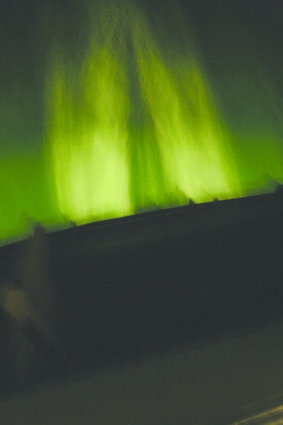Skywatch Returns
Skywatch
Keeping an eye above the horizon...
The Hawk is back! After a two year hiatus, I am please to report that the VA has cleared me to return to (limited) writing duty.
Fortune and perseverance permitting, I plan to help you keep your gaze above the horizon with a monthly briefing. My heartfelt thanks go out to all of the wonderful folks on my Team who made my return to print possible.
Much has happened since my last article: The International Space Station has become fully operational; us stick-and-rudder people are still mourning [over] the retirement of the Space Shuttles, but SpaceX and Orbital Sciences Corp. are now delivering supplies on a commercial basis as several American companies progress toward a commercial manned spaceflight capability. This is a real game changer – by the end of the decade, we could have three or more private American companies sending people to orbit while other private firms give daily suborbital joyrides!
Meanwhile, Congress continues to let NASA crawl forward toward an asteroid-capture mission in a decade or so.
JPL's Curiosity Science Laboratory is now exploring Mars along with its older brother, Opportunity, now entering its eighth year of service.
Voyager has found the edge of the Solar System, and Kepler has found 3500 planets around other stars!
Using NASA's Wilkinson Microwave Anisotropy Probe, we've now pinned down the age of the Universe to 13.77 billion years with an uncertainty of only 0.4 percent (though data from Europe's Planck space probe threatens to tweak this figure a tad). Such exciting times!
Plenty more excitement is on its way for those with an eye on the sky. Much of it is going on at Edwards AFB and Mojave Air & Space Port. It will take the entire Loop staff to keep you up-to-date on these happenings!
On the personal side, I've devoted much of the last two years to health challenges. Adventure has been a fine therapy. Of particular note was my first cruise to Alaska, which I shared this last September with Lauren Hollen. I'd never been aboard a ship before as a paying passenger. What a luxury to order a cocktail with dinner!
At the top of our list of "must see" experiences was the Aurora Borealis. There was only one clear night on our entire voyage, and it was at the northernmost point. As we sailed south, we manned the fantail – all alone. (I was amazed that no one else was interested in this remarkable opportunity! On the other hand, all alone wasn't bad either...) We were not disappointed.
As the lights of Skagway faded into the distance, the horizon refused to darken – a green glow persisted. In time it was joined by brighter yellow patches higher in the sky, changing from second to second as we watched. There was nothing mystical or ethereal about the experience for us two old scientists, it was simply glorious!
Photographic conditions were far from optimal. Lauren balanced her camera on the railing as best she could and held the shutter open as I counted out thirty seconds. The result was probably the worst photograph of the aurora ever published and she is proud to share it here with you. We were not trying to capture the image of the aurora so much as capture the spirit of that magical moment. To that end we were quite successful!
Almanac
This January is a fine month for planet watchers. Early winter often gives clear, crisp viewing, and all of the planets will be make an appearance this month. Venus has graced our evening sky all autumn. Now it's time for it to greet us in the morning. On the eleventh, she will pass between the sun and us. Start watching for her in the east as you venture out bleary-eyed into the cold winter dawn.
As Venus dances with the sun in the twilight, Jupiter will lord over the night sky all month. (Rule of thumb: If you are ever wondering whether you're looking at Jupiter or Venus, then it's certainly Jupiter; dazzling Venus is never mistaken for Jupiter! Also, Venus is never overhead; she is always near the horizon (i.e., near the sun since she's closer than we are).
Mars rises around midnight and brightens significantly as the month goes on. Saturn rises about three hours later with its rings prominently displayed. Uranus and Neptune can also be found with a telescope low in the southwest in the evening. As January closes, Mercury will become visible in the evening sky.
Sunrise/Sunset (Jan. 4) 7:03 a.m./4:55 p.m.





